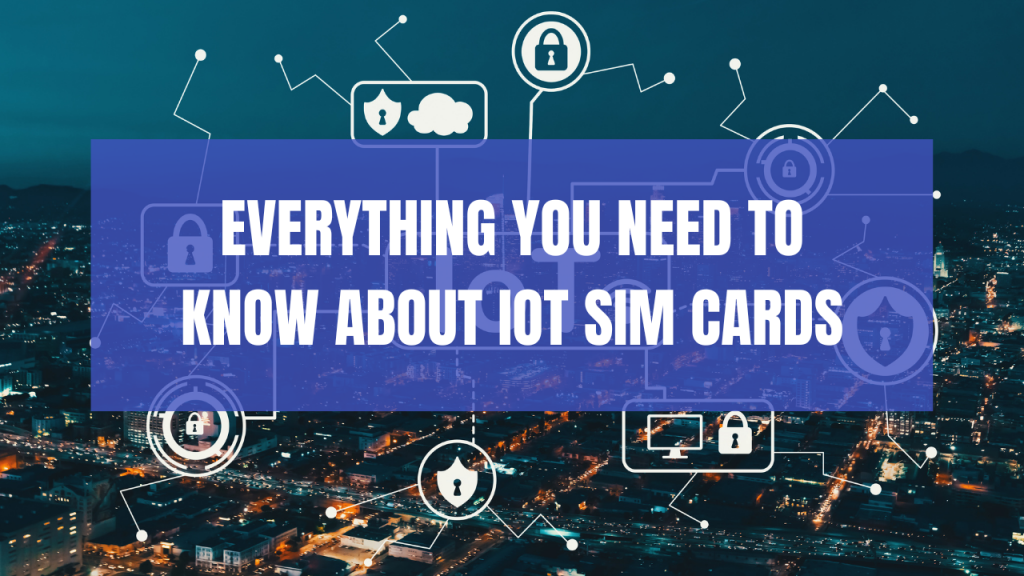
The Internet of Things (IoT) plays a crucial role in enhancing our lives and businesses. IoT devices are everywhere, from smart thermostats and wearable fitness trackers to industrial sensors and even smart fridges. Have you ever wondered how these devices manage to communicate with the internet seamlessly? The answer lies in the tiny but mighty SIM card.
Below, we’ll look into the world of IoT SIM cards, uncovering what they are, how they work and how to choose the right IoT SIM card for you.
What are IoT SIM Cards?
At the heart of every IoT device is a small SIM card, just like the one in your smartphone. However, IoT SIM cards are predominantly designed for machines and devices rather than for making phone calls or sending texts. Let’s delve into how these little cards work their magic in connecting your devices to the internet.
What is an IoT SIM Card made up of?
A SIM card, which stands for Subscriber Identity Module, is like an electronic identity card for your device. It stores vital information that allows a network to recognise and authenticate your device.
Here’s a simple breakdown of what’s inside an IoT SIM card:
- Unique Identifier (IMSI): Each SIM card has a unique International Mobile Subscriber Identity (IMSI) number. Think of it as your device’s ID number in the network’s database. It helps the network identify your device and authorise it to connect.
- Authentication Key (Ki): This is like a secret password stored on the SIM card. It’s used to verify that your device is legitimate and not an impostor trying to access the network.
- Phone Number (MSISDN): Some IoT SIM cards don’t make phone calls but may still have a phone number associated with them for billing purposes.
How does an IoT SIM connect to a Network?
Now, let’s see how an IoT SIM card helps your device connect to the internet:
- Power On: When you power up your IoT device, it communicates with the SIM card and requests access to the network.
- Identification: The SIM card provides your device’s unique IMSI to the nearest cell tower.
- Authentication: The network checks the IMSI and uses the Ki to verify that your device is authorised to connect. If the IMSI and Ki match, your device gains access to the network. Contrary to popular belief a SIM does not choose the strongest signal. This is always down to the device’s own internal logic.
- Data Transfer: Once authenticated, and the Access Point Name (APN) your device can send and receive data from the internet via the cellular network.
How to Choose the Right IoT SIM Card
There are different types of IoT SIM cards tailored to various use cases:
- Physical SIM: We’re all probably familiar with these small plastic cards that fit into your phone. IoT SIM cards look the same, but are designed for use in devices instead of a phone. They come in three sizes and may be single network or roam on multiple networks.
- eSIM: A virtual SIM card that can be programmed remotely with networks and tariffs, making it perfect for devices that may need to switch networks or carriers.
- Global Roaming SIM: The perfect SIM for IoT devices because they provide maximum coverage and network redundancy. Perfect for devices that move around such as GPS trackers or in locations where network coverage may be limited. Being able to use multiple networks ensures your device stays connected if a particular network has a problem.
In a nutshell, IoT SIM cards are the critical but unsung heroes behind the scenes, enabling your devices to communicate with the world. They store essential information, verify your device’s identity, and connect it to the internet via cellular networks. So, the next time you see a smart thermostat or a fleet of connected vehicles, you’ll know that it’s the humble IoT SIM card that keeps them connected and working their magic.
If you’re seeking a secure, dependable solution to automate processes in your organisation and manage substantial data loads, IoT SIMs may be the one for you. Feel free to reach out today or explore our selection of IoT SIMs.
No Comments yet!